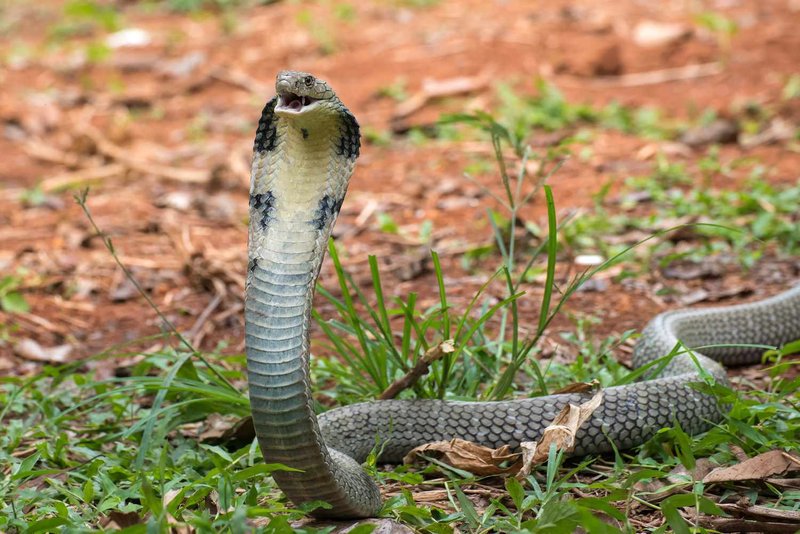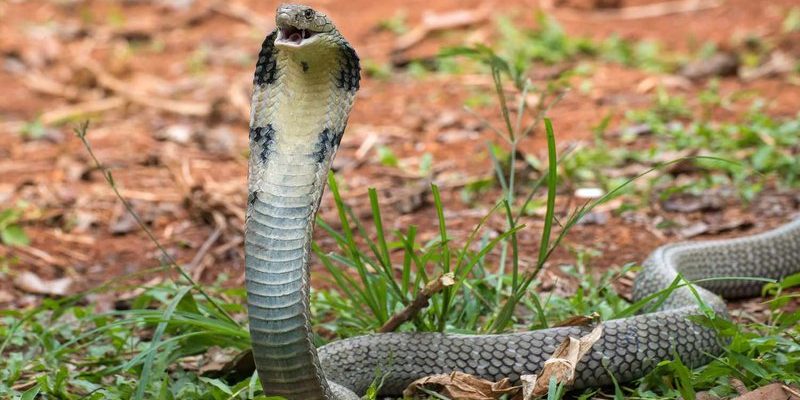
The truth is, like many species around the globe, the king cobra faces challenges that threaten its survival. From habitat loss to climate change, these magnificent reptiles are under pressure. But, here’s the good news: conservation efforts are underway to protect king cobras and their environments. Let’s dive into what’s happening to ensure these snakes stick around for generations to come.
What Makes the King Cobra Unique?
One of the most fascinating aspects of the king cobra is its size and behavior. Unlike most snakes, the king cobra can stand up to 6 feet tall when it raises its head. This height allows it to look its prey in the eye, almost as if it’s confronting them. The king cobra is also known for its distinctive hood, which expands when it feels threatened. Picture a balloon slowly inflating—that’s how the king cobra shows it means business!
Its impressive diet is another aspect that makes the king cobra stand out. They primarily eat other snakes, even venomous ones! This unique hunting style highlights their role in the ecosystem as a predator. However, everyone has their predators. Humans impact the habitat and population of king cobras, which brings us to a tougher conversation: their conservation status.
Are King Cobras Endangered?
The short answer is yes, but let’s unpack that. The king cobra is classified as “vulnerable” by the International Union for Conservation of Nature (IUCN). This means that while they’re not on the brink of extinction, their populations are declining. A few factors contribute to this status, including habitat destruction, illegal wildlife trade, and climate change.
Let’s break down these threats a bit more. Habitat destruction, for instance, happens when humans clear forests for agriculture, urban development, or logging. When the king cobra loses its home, it not only struggles to find food but also faces increased human-wildlife conflicts. Imagine relocating to a new city and finding that your favorite parks and hangout spots are all gone!
Habitat Loss and Its Impact
When we talk about habitat loss, it’s not just the king cobra that suffers; entire ecosystems can be disrupted. Forests and wetlands are crucial for these snakes, providing them with places to hunt and hide. Unfortunately, as humans expand, these vital areas shrink. This creates a chain reaction, leading to fewer resources for many other species too.
Another point to consider is that king cobras are sensitive to changes in their environment. For example, when forests are removed, it alters the food web. Without enough prey, the king cobra’s survival becomes even more challenging. It’s a bit like being a chef with limited ingredients—it becomes harder to create a delicious meal!
Climate Change and Its Effects
Climate change is another major player in the king cobra’s struggle. Rising temperatures and erratic weather patterns can affect their breeding and hunting habits. Imagine trying to plan your vacation, but suddenly the weather takes a turn for the worse; that’s somewhat similar to what king cobras experience every day.
Temperature changes can also impact their prey availability. If the climate shifts enough to affect the snake’s primary food sources, it can lead to starvation. This isn’t just a problem for the king cobra; it’s part of a larger puzzle concerning wildlife and ecosystems everywhere.
Conservation Efforts for King Cobras
So, what’s being done to protect these incredible snakes? Several conservation organizations and local governments are working tirelessly to create a safer future for king cobras. These efforts often include habitat preservation, education, and anti-poaching initiatives.
For instance, some projects focus on protecting the forests where these snakes live. By maintaining these habitats, we give king cobras a fighting chance to thrive. Education is another vital aspect. Informing the local communities about the importance of king cobras helps reduce fear and encourages coexistence. When people understand that these snakes are not just dangerous creatures, but valuable members of our ecosystem, attitudes can change.
Community Involvement in Conservation
One of the most effective ways to safeguard king cobras is through community involvement. Programs that train locals to monitor wildlife and manage natural resources can make a significant difference. When a community takes pride in its natural surroundings, it’s easier to protect them.
For instance, in some regions, locals participate in tours and educational workshops that highlight the king cobra’s role in the environment. This not only raises awareness but also provides economic opportunities that emphasize conservation over exploitation. If people see the value in keeping these snakes alive, they are more likely to protect them.
The future of the king cobra hangs in a delicate balance. While they are currently classified as vulnerable, ongoing efforts can help shift this status to one of resilience and recovery. By raising awareness, protecting habitats, and engaging communities, we can work together to ensure these remarkable snakes remain a part of our planet’s biodiversity.
Ultimately, saving the king cobra is about more than just the snake itself; it’s about protecting the ecosystems they inhabit and the intricate web of life that depends on them. So next time you hear about this majestic creature, remember that every bit of effort counts, and together, we can make a difference.

